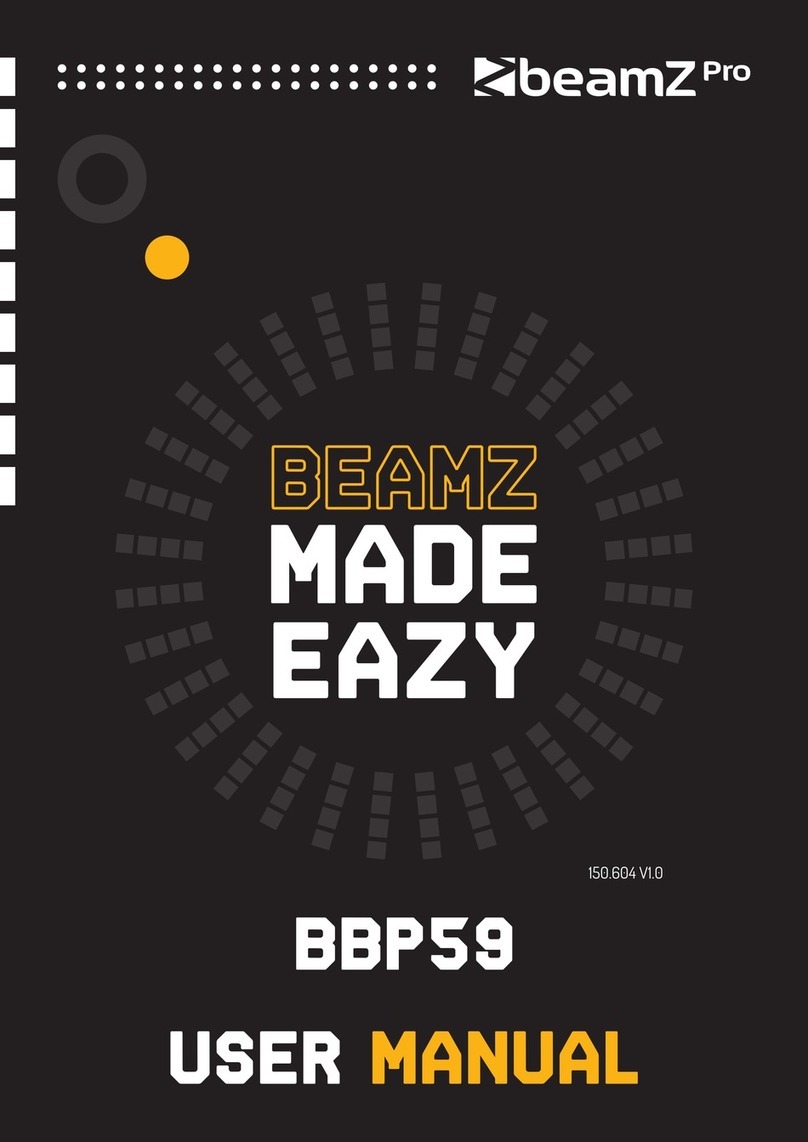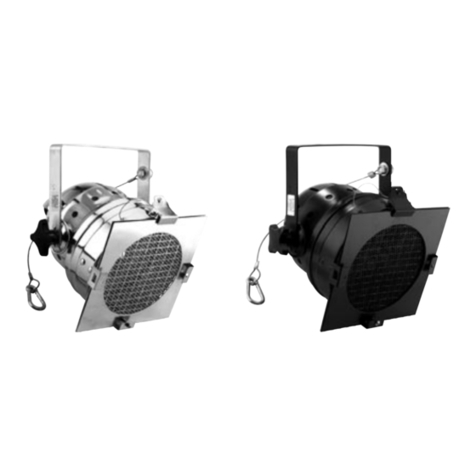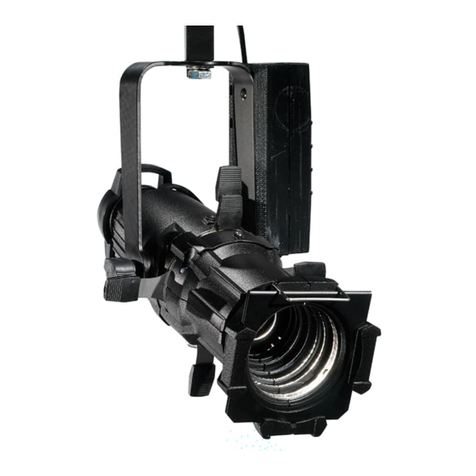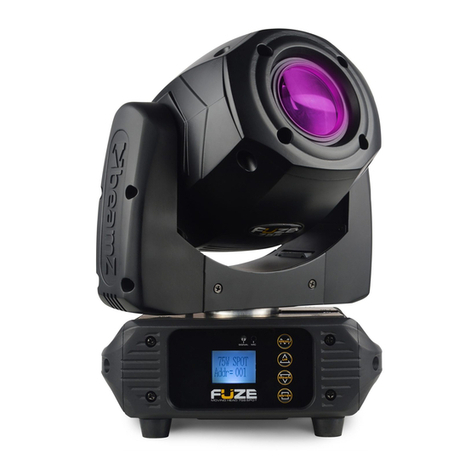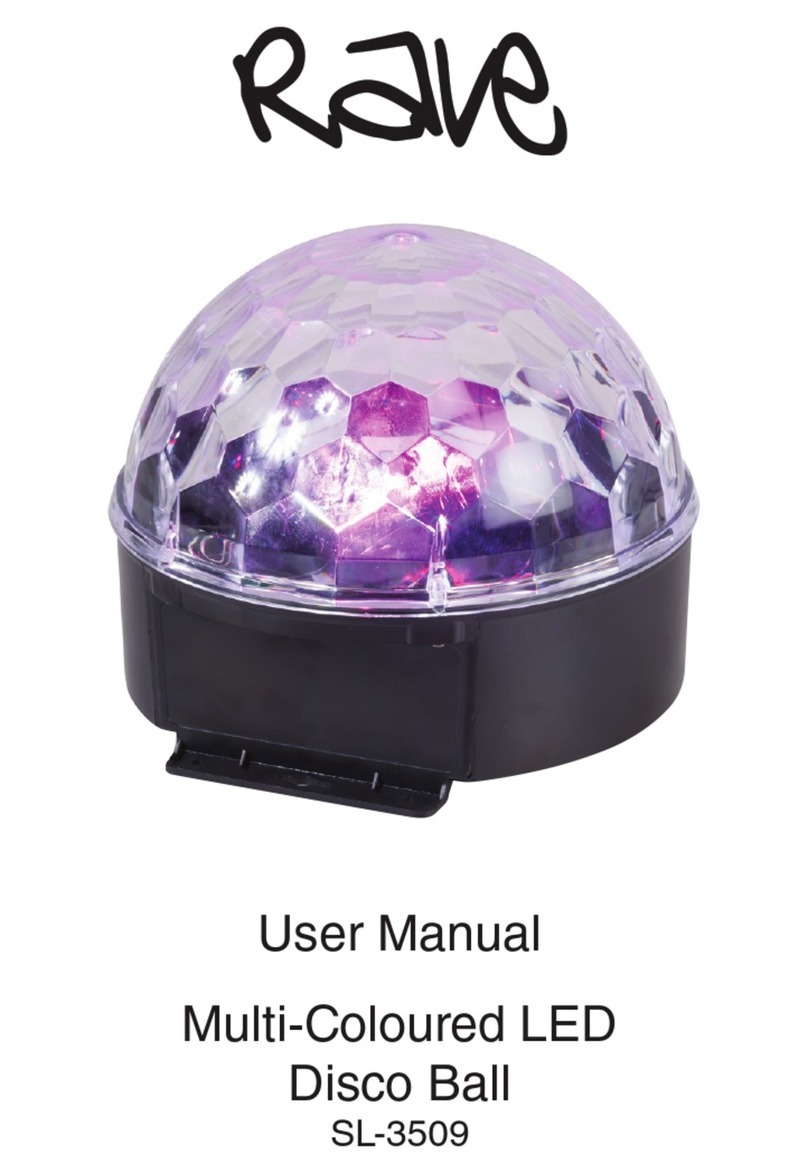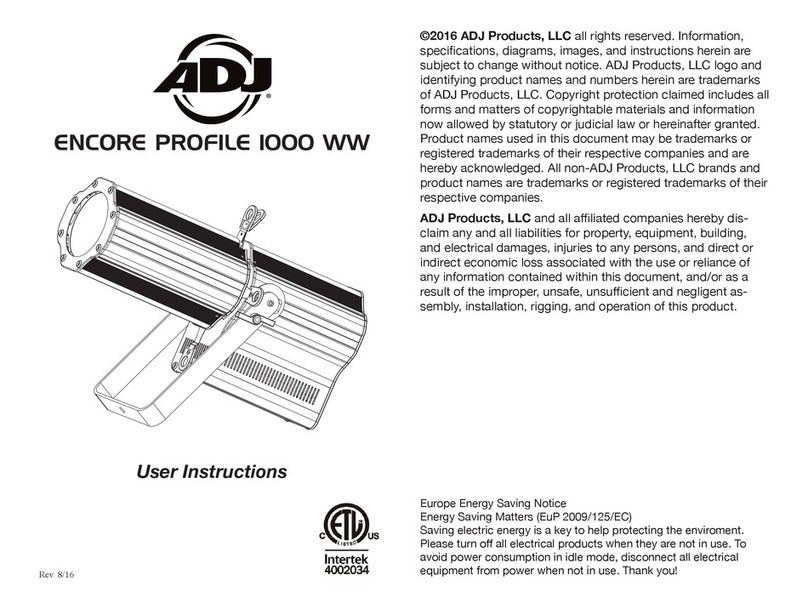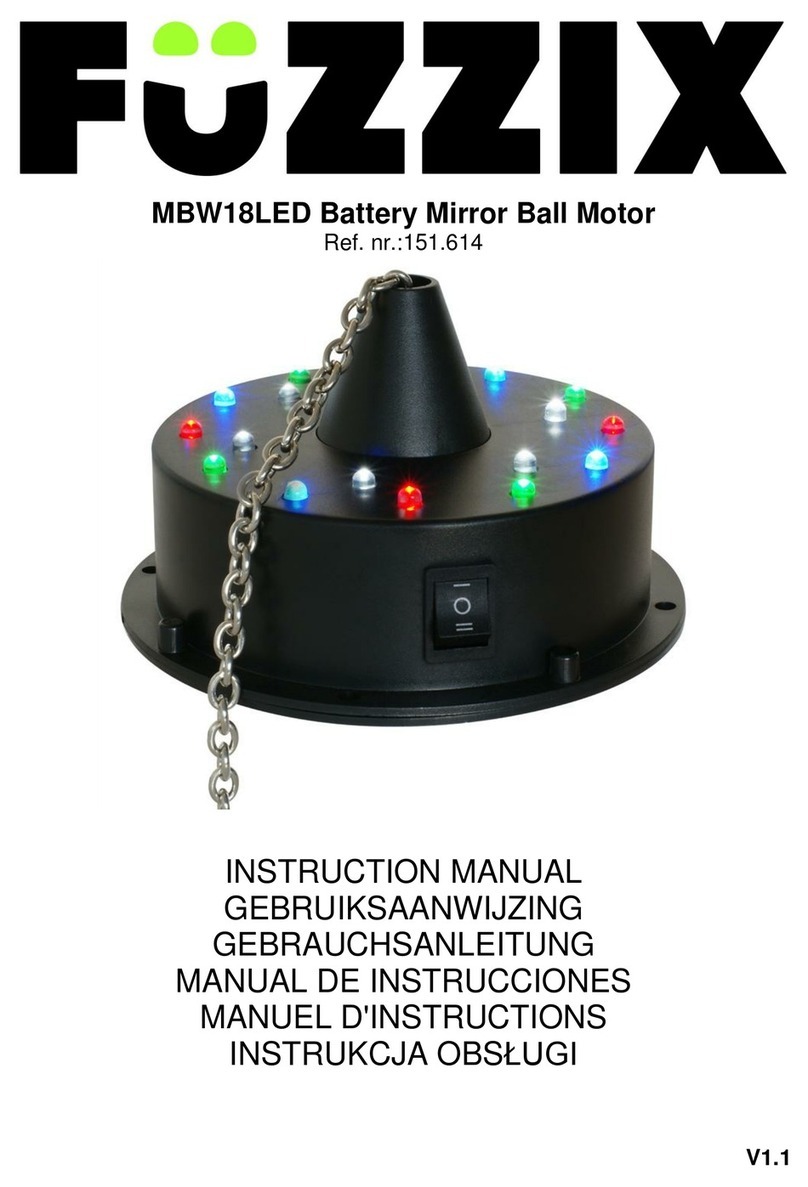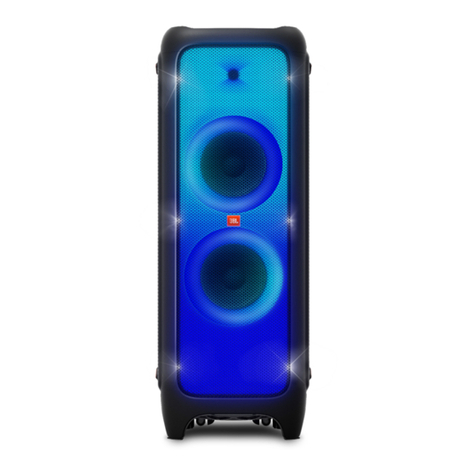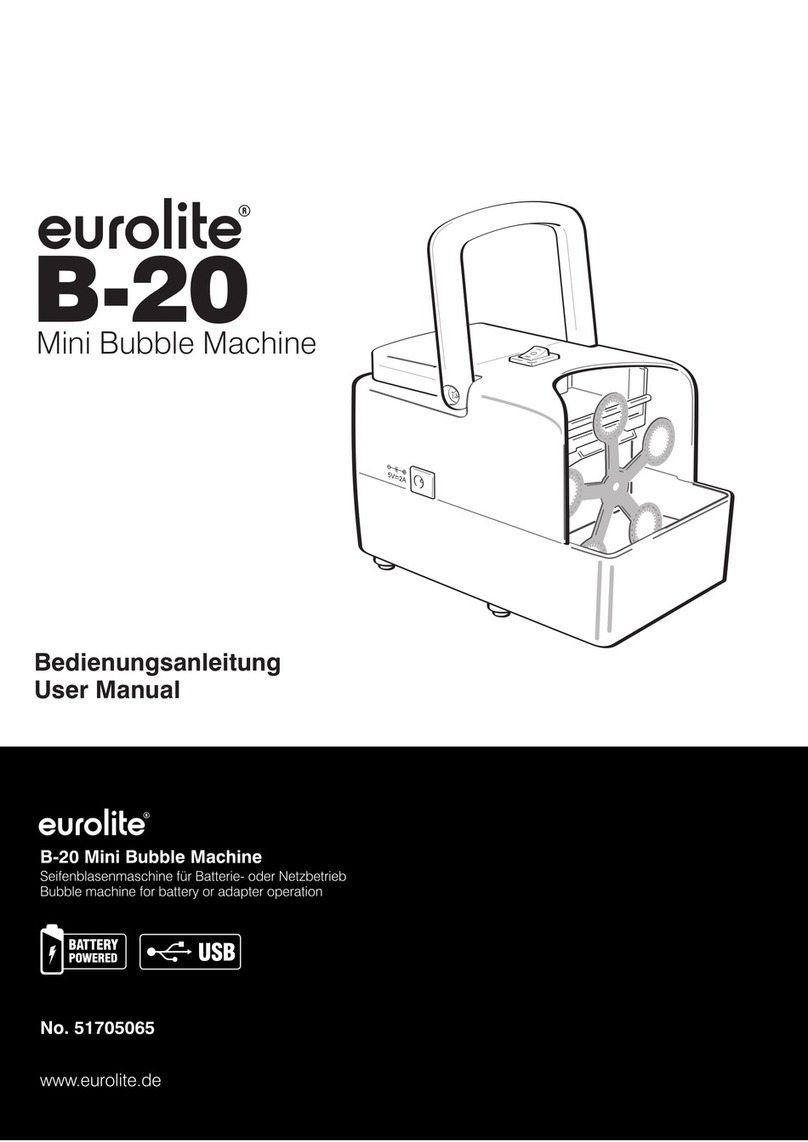Evenlite RAZOR-3 SERIES User manual

2575 Metropolitan Drive • Trevose • PA 19053 U•S•A
Telephone: (215) 244-4204 • Fax: (215) 244-4208
RZR3 DIE CAT ALUMINUM EXIT SIGN / FIXTURE
INSTALLATION AND OPERATING
INSTRUCTIONS
IMPORTANT SAFEGUARDS
When using electrical equipment, basic safety precautions should always be followed including the
following:
Page 1
Z410139 Rev E
RAZOR-3 SERIES
SAVE THESE INSTRUCTIONS
CONSERVER LA FICHE D’INSTRUCTION
READ AND FOLLOW ALL SAFETY INSTRUCTIONS
1. DO NOT use outdoors.
2. DO NOT mount near gas or electric heaters.
3. Equipment should be mounted in locations and at heights where it will not be
readily subject to tampering by unauthorized personnel.
4. The use of accessory equipment is not recommended by the manufacturer.
Use of such equipment may cause an unsafe condition.
5. DO NOT use this equipment for other than intended use.
6. Conduct periodic visibility tests in accordance with the applicable installation
code (such as NFPA 101).
7. Supply connections MUST be made inside the junction box.
8. Install using recommended junction box ONLY.
9. Servicing of this equipment should be performed by a qualified service personnel.
10. Install sign indoors only where not exposed to direct unfiltered sunlight, liquid
o o
spray or temperatures outside of the range of 10 C to 40 C.
11. Before installing unit, disconnect power at breaker panel.

INSTALLATION INSTRUCTIONS
This Exit Sign is designed to be mounted to a junction box (supplied by others). It
can be either back, top or side mounted. The single face unit back mounts to a standard
4” Square (4S) junction box. Dual circuit options will require a deep junction box.
Z410139 Rev E Page 2
DEPTH
4.00
4.00
3 ⅜
3 ⅜
4 ¾ Between mounting holes
Figure 1:
Junction box dimensional outline
DEPTH:
Standard J-box Depth = 1 ½”
Deep J-Box Depth = 2 ⅛”
SECTION 1: BASIC FUNCTIONALITY AND FEATURES
Figure 2: Opening the sign
1. Open enclosure and separate panels using a flat blade screw driver (as shown below).
To separate the housing, insert a flat blade
screwdriver into the 4 slots on the edge and rotate
the blade gently so that the housings snaps
apart. Repeat on all sides before pulling apart.
2. Support rear panel on spacers and punch out appropriate knockouts to fit junction box.
Figure 3: Rear Panel Knock Outs
Junction Box Knockouts
Knockout for lead
wires to sign.
Knockouts for remote
connection wires

Z410139 Rev E Page 3
3. To remove directional indicators, remove light guide assembly and diffusers and set aside.
Support front cover and knock out desired indicator(s).
Figure 4: Removing the directional indicators (chevrons)
Knock out desired directional
indicators (chevrons) supporting
the front panel as shown.
Before installing unit, disconnect power at breaker panel
4. The spider plate assembly will be provided assembled as shown below. Connect lead wires to feed
wires in 1 ½” deep junction box.
Figure 5: Lead wire connections to transformer (Single Circuit Application)
Secondary wires
to Exit Sign
Transformer
Green
Ground White
Neut
Black
120V
Orange
277V
Cap unused
primary wire
Protected Earth
Ground Screw
Cable clamp
(strain relief)
Spider plate
Circuit 1 Connection
Secondary wires
to Exit Sign
Orange
277V
White
Neut Black
120V
Green
Ground
Circuit 2 Connection
Orange
277V
Cap unused
primary wire
Cap unused
primary wire
Transformer Circuit 1
Ground
Screw
Transformer Circuit 2
Green
Ground
White
Neut
Black
120V
For AC versions with two circuit input connect power to Main input and Backup Input requires
2 ⅛” deep junction box.
Figure 6: Lead wire connections to transformer (Dual) Circuit Application

Z410139 Rev E Page 4
1. Secure spider plate to junction box. Route transformer’s secondary leads through center
knockout of the rear panel.
2. Place the filler plates in rear panel as per Detail B.
3.Terminate transformer leads to light guide assembly, per Detail A below.
4. Route wires between the rear panel and the white reflector. The wires should not be
visible when looking at the sign from the front face.
5. Snap on Front Panel with the colored diffuser.
SECTION 2: BACK MOUNT INSTALLATION (SINGLE FACE SIGN)
Figure 7: Back Mount Installation
2X screws
supplied with
J Box
Filler Plate (See Detail B)
Front Panel
with diffuser
Light Guide Assy
w/ Photo-luminiscent Panel
Rear Panel
Green film
(Transparent)
white reflector (far side)
Optional Security Enclosure
(Single Face)
Refer to Instructions supplied with
security enclosure for full assembly
details.
Detail A
White reflector
Transformer
lead wires
Transformer Connectors
Remote Option Conn
Used in all other applications
“Thicker” side clip is supplied when a
single face security enclosure is ordered.
Outline shown below is used in all other
applications.
Detail B
transformer secondary leads

Z410139 Rev E
SECTION 3: CANOPY MOUNT (SINGLE OR DOUBLE FACE SIGNS)
1. Secure spider plate to junction box. Guide transformer secondary leads through canopy and
connect to sign.
2. Secure canopy to sign and then fasten to spider plate. If an optional security cover will be
utilized, it must be assembled to sign prior to securing the canopy to the sign.
(2) PPH #6-32 x 5/8” long screws
Canopy to Spider Plate Assy
supplied with Exit Sign
(2) PPH #6-32 x 3/8” long Screws
Canopy to Exit Sign
supplied with Exit sign
SCREW LENGTH IS CRITICAL.
DO NOT SUBSTITUTE.
Spider Plate
Assy
Standard 4 inch J Box
Not supplied with sign.
Secure spider plate
assy to J-box
with screws provided
with J-box.
Canopy
Terminate Transformer
secondary wires to Sign.
Page 5
Figure 9: Canopy mount Installation (Side Mount)
Figure 8: Canopy mount Installation (Top/ Ceiling Mount)
(2) PPH #6-32 x 3/8” long Screws
Canopy to Exit Sign
supplied with Exit sign
SCREW LENGTH IS CRITICAL.
DO NOT SUBSTITUTE,
MAY CAUSE DAMAGE TO
INTERNAL COMPONENTS.
(2) PPH #6-32 x 5/8” long screws
Canopy to Spider Plate Assy.
Supplied with Exit Sign
Canopy
Secure spider plate
assy to J-box
with screws provided
with J-box.
Standard 4 inch J Box
Not supplied with sign.
Spider Plate Assy
Terminate Transformer
secondary wires to Sign
(leads are shown at an
exaggerated length for
clarity. Actual leads are
shorter).
Optional Security Enclosure
Must be installed prior to
securing canopy to sign.

Z410139 Rev E Page 6
SECTION 4: MASTER - REMOTE SIGN
Master Sign:
Canopy End
Mount
Remote Sign
Back Mount
The Master - Remote product (RZMR3) is
supplied with 2 signs. The master sign (Figure 11)
is provided with a system battery, spider plate
assembly (for power) and an option connector
used to connect the two signs.
The remote sign (Figure 12) is assembled in
the same manner as the master sign, without a
spider plate assembly. An option connector is
also installed in the remote sign for interconnection
to the master sign.
Interconnect the signs with a conductor cable
(20 awg minimum) per the National Electric
Code, observing correct polarity. Distance of
the run should be 50 feet or less.
To install remote lamp (3.6V,2W max - not shown),
the option connector is installed similarly in the
master sign as shown in Figure 11. Terminate
remote lamp leads to the option connector in
mating pins labeled “Remote Lamp”. Remote
Lamp max mounting height to be 11ft or the
equivalent.
Figure 10: Master - Remote Sign Example
Figure 11: Master Sign (Canopy-End Mount) option connector
Master Sign
Canopy
Spider Plate assembly secured to JBox
Note: Wires from the transformer are not shown for clarity
Refer to Figure 9 for connecting transformer wire to sign.
Screws to secure canopy to spider plate
(Supplied with Sign)
Screws to secure canopy to sign(supplied with sign)
Option Connector
Remote Exit
Terminations
Route remote wires between canopy and
spider plate, outside of the junction box
Install Remote
Connector such that
white area indicated
above corresponds to
the white marking on
the flex PCA within the
sign.
Fire Alarm
Remote Lamp
Remote Exit
The master sign can be mounted on the top or sides (left or right) by
mounting the canopy in the same location as the side clips.
Refer to Figure 8 for top canopy mount.

2X screws
supplied with
J Box
Filler Plate
Front Panel
Light Guide Assy
Rear Panel
white reflector (far side)
Route remote wire from master sign to remote sign via the knock out in the rear panel. The
remote sign can be mounted to a junction box (as shown) or secured safely to the wall using anchors.
The remote option printed circuit assembly should be installed into the sign as shown below. The
text legend on the PCA should be visible when looking at the rear of the light guide assembly.
Figure 12: Remote Sign (Back Mount) Installation
Knockout for remote
option wires
Remote
Exit
- +
Remote
Lamp
- +
Fire
Alarm
- +
This product contains Ni-MH batteries. Used batteries may not be disposed of in the municipal solid waste
stream. Ni-MH batteries must be recycled or disposed of properly. For information on local recycling drop-off
points, phone toll free 1-800-BATTERY (1-800-228-8379).
Supplemental
Battery (1)
Supplemental
Battery (2)
Figure 13: System / Remote Lamp Battery Replacement
System Battery
J1 J2
J3
Wire channel for
battery leads on
opposite side of
midframe. Shown
as dashed lines
for clarity.
System Battery to J3
Supplemental
Battery (2) to J1 Supplemental
Battery (1) to J2
The System battery is supplied with the sign for emergency backup configurations.
Supplemental batteries are provided with the sign when Remote Capacity/ Lamp is ordered.
Z410139 Rev E Page 7
Connectors on
farside
Text legend on PCA
(Refer to Figure 11 & 14)

To Sign
Fire Alarm
Remote Lamp
Remote Exit
Figure 14: Option Connector
Page 8
Z410139 Rev E
FLASHER/ FIRE ALARM
Battery Backup Emergency signs that are equipped with the FLASH in
EMERGENCY MODE OPTION will automatically flash in the emergency
mode but not flash on AC operation. AC Only exit signs that are equipped
with the flash option will flash continuously while power is supplied.
AC Only and Battery Back up emergency signs that are equipped with the
FIRE ALARM SIGNAL MODE FLASH option will automatically flash in both
AC and emergency modes upon application of a fire alarm signal to the
option connector (Figure 14). The fire alarm signal can be either AC or DC
of either polarity, and range from 12 to 24 volts. The current draw from the
fire alarm signal is less than 10 milliamps (mA).
Units that include one of the above options,
are intended for installation in locations where such
features are permitted by local codes.
Flasher Rate: 60 per minute
Duty Cycle: 25%
DIAGNOSTICS
For units with Self-Testing/ Self Diagnostics option, refer to the section on next page for operating instructions.
Battery back-up units without Self-Testing/ Self Diagnostic option Include a battery diagnostics system which
indicates, via flashing of the indicator light, that the battery needs replacement. If flashing occurs after a new
installation, check that the battery plug is properly inserted into the circuit board connector (See figure 13).
SECTION 7: OPTIONS
TEST FOR BATTERY BACKUP WITHOUT SELF-TEST/ SELF DIAGNOSTIC
To test battery backup units, use test switch to simulate AC power outage. The indicator light will go out, and the sign will
remain lit, indicating transfer to emergency mode. It will remain lit on battery power until switch is released. Release of
switch will automatically restore AC/ Battery charge mode, with indicator light on.
Testing for longer periods is best accomplished by turning off AC circuit power. Signs should be tested in accordance with
National Electric Code and NFPA 101 Life Safety Code Requirements which specify monthly testing for 30 seconds and
yearly testing for 90 minutes.
Note that the batteries will take some time to reach full charge after a prolonged test, and that the unit cannot provide full
duration operation should a real power outage occur before the batteries have had an opportunity to reach full charge. It is
recommended that long duration tests be limited to once yearly, and be conducted when the area will be unoccupied
afterwards.
REMOTE EXIT AND LAMP OPERATION
The self-diagnostic system “learns” the lamp and remote sign load when the unit reaches it’s
first full charge. It is therefore necessary to have any remote lamp or sign already connected
when first applying AC power. Subsequent self-tests and user-test will compare the actual
lamp and sign load to the “learned” value.
If the remote lamp and sign load is changed once it has been “learned”, it is necessary to
disconnect AC Power at the circuit breaker panel and unplug the internal battery (refer to
Figure 13 for details).
Once these are reconnected, the unit will “learn” the new lamp and sign load.
INFRA RED REMOTE TESTING
To activate TRANSMITTER, remove tab from back of device.
The USER-TEST can be performed up to 20 feet away using the optional “INFRA RED
REMOTE
TESTING TRANSMITTER”. By aiming the TRANSMITTER (Figure 15) at the legend
face, and pushing either
the “30 SECOND” or “90 MINUTE” button for 1 second, the TRANSMITTER can initiate
or cancel
“30 SECOND” or “90 MINUTE” user tests. Figure 15: Remote
Transmitter

Z410139 Rev E Page 9
SELF TESTING/ SELF DIAGNOSTIC OPERATING INSTRUCTIONS
The unit meets the requirement of NFPA 101 for Periodic Testing of Emergency Lighting Equipment.
It provides visual indication of unit malfunctions including:
Battery Fault
Charger Fault
Transfer Fault
Lamp Fault
TABLE: STATUS INDICATIONS
STATUS DISPLAY FUNCTION ACTION
Continuous Green
Continuous Red
Flashing Green
Alternate Red and Green
Red
One Blink ON / Pause
Red
Two Blinks ON / Pause
Red
Three Blinks ON / Pause
Red
Four Blinks ON / Pause
Battery in
Float/Trickle Charge
Battery High Charging
In Test Mode
Insufficient Charge
for User Test
Transfer System Failure
Battery Failure
Charger Failure
Lamp Failure
None
Wait for Green Status
Wait for
Test to Complete
Wait for Full Charge
Factory Service
Check Connections
Replace Battery
Factory Service
Check Remote
Connection /
Factory Service
SELF TEST
The unit will perform a self-test and diagnostic function at least once every 28 days. The self test
will disable the charger and turn on the LEDs for 30 seconds to check the lamp load, battery and
transfer function. The test will be performed only if the battery is fully charged. If not, the test will
automatically reschedule. The charger function is monitored while AC is applied.
USER TEST
A user-test may be performed at any time the status display is continuous green. On initial power-up,
it could take up to 72 hours for the status display to reach continuous green.
With a fully charged battery, pressing the test switch momentarily will initiate a 30 second test.
Pressing the test switch continuously for 4 seconds and releasing it will initiate a 90 minute test.
Either Test can be cancelled by pressing the test switch again for 1 second.
After installation is complete, reapply power and notify the
authority having jurisdiction.

THIS PAGE INTENTIONALLY LEFT BLANK

THIS PAGE INTENTIONALLY LEFT BLANK

THIS PAGE INTENTIONALLY LEFT BLANK
Other manuals for RAZOR-3 SERIES
1
Popular Dj Equipment manuals by other brands

Chauvet DJ
Chauvet DJ COLORband PiX-M USB Quick reference guide
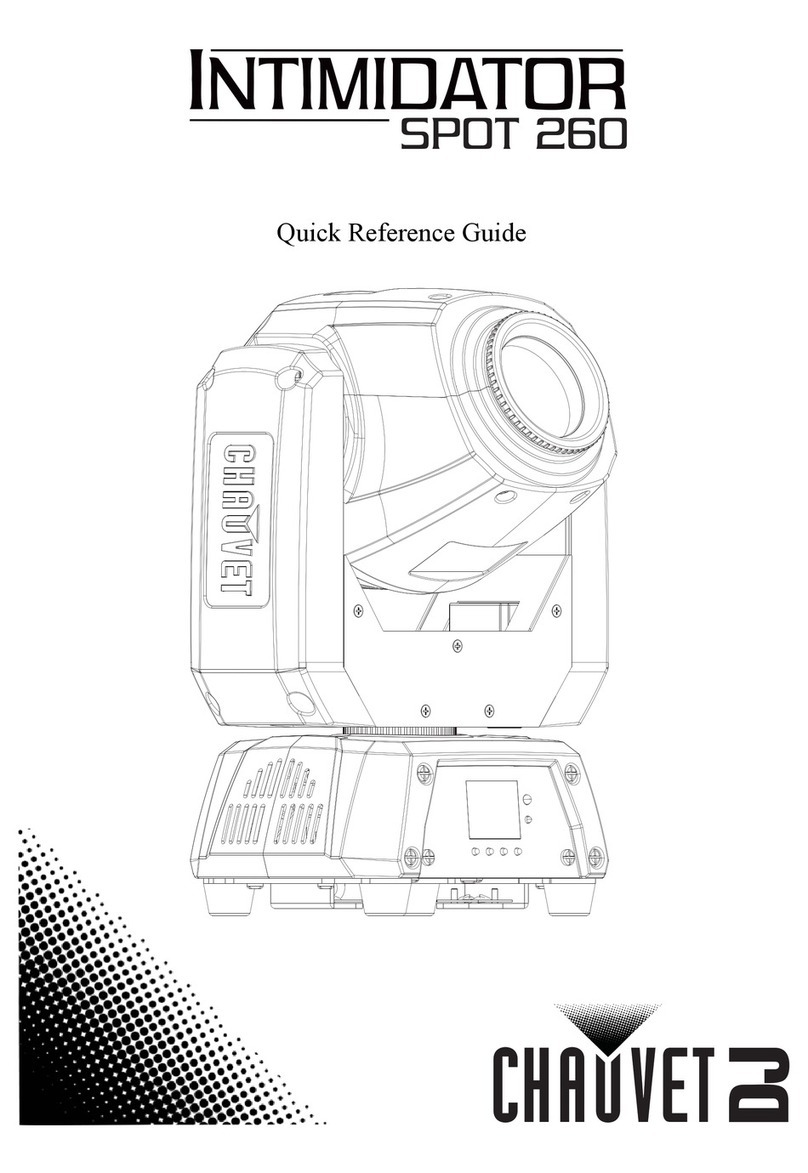
Chauvet DJ
Chauvet DJ INTIMIDATOR SPOT 260 Quick reference guide

Vision
Vision Solid State Logic C10 HD quick start guide
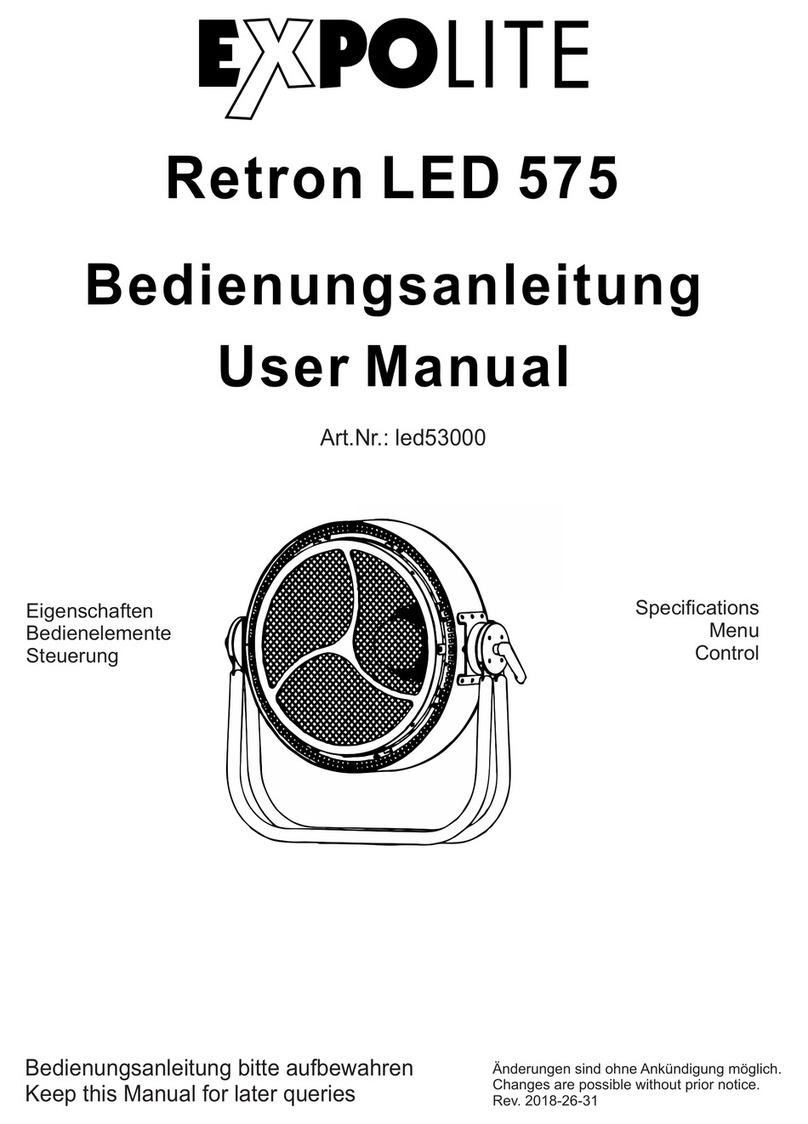
Focon Showtechnic
Focon Showtechnic EXPOLITE Retron LED 575 user manual
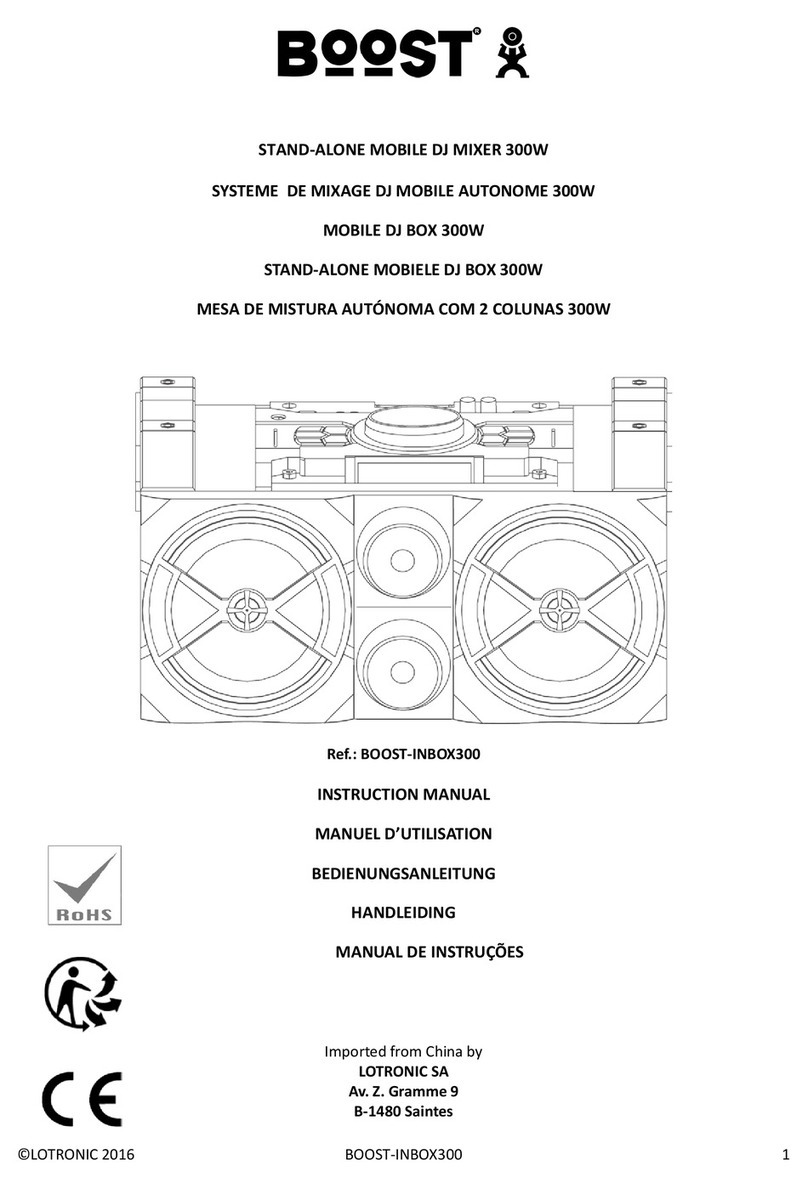
Boost
Boost INBOX300 instruction manual
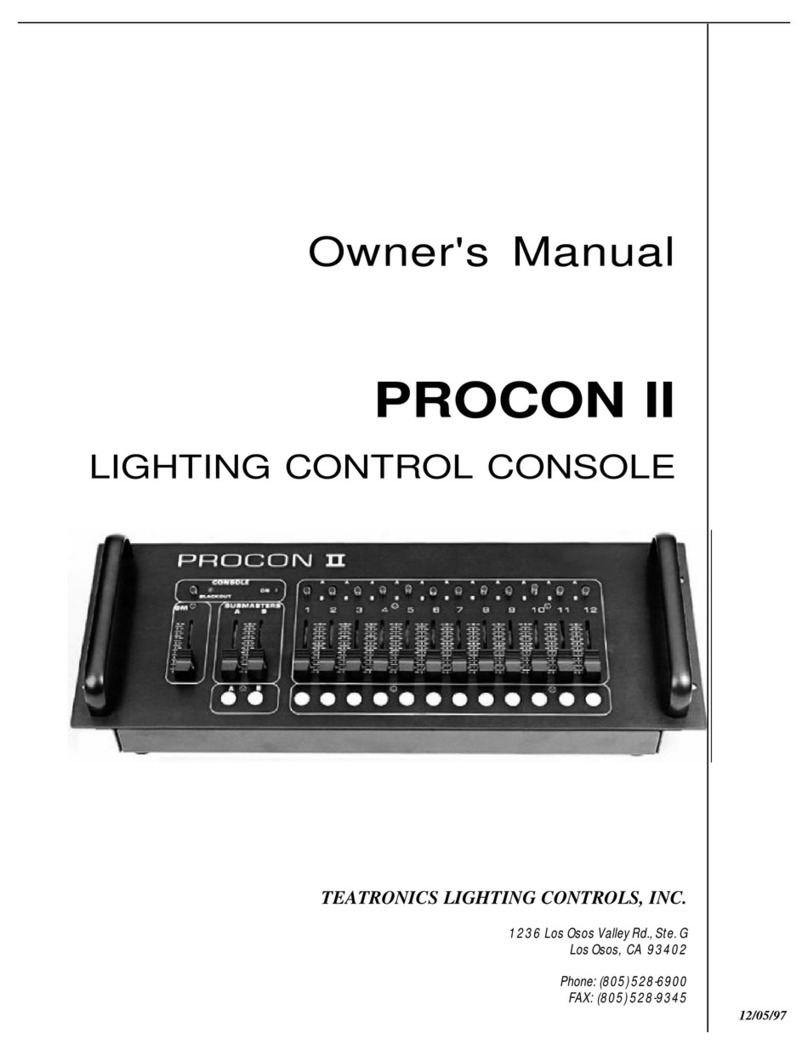
Teatronics Lighting Controls
Teatronics Lighting Controls PROCON II owner's manual
